As part of our Trainspotting Season I have been looking in a bit more detail at the literature of the hobby – the many guides, memoirs and journals that have featured large in railway publishing since the boom of interest started in the 1940s.
As with all booms, it doesn’t come out of nowhere and begins, as all things do, at the beginning, with childhood and the dawn of railways. Children’s railway books started being produced around the 1860s with simple ABC books teaching children to read, and introducing them to this important, growing network of railway lines, stations and, locomotives.

Encouraging children to watch and take note of the railway world around them continues into the first half of the 20th century though the popular I-Spy series and comic books.
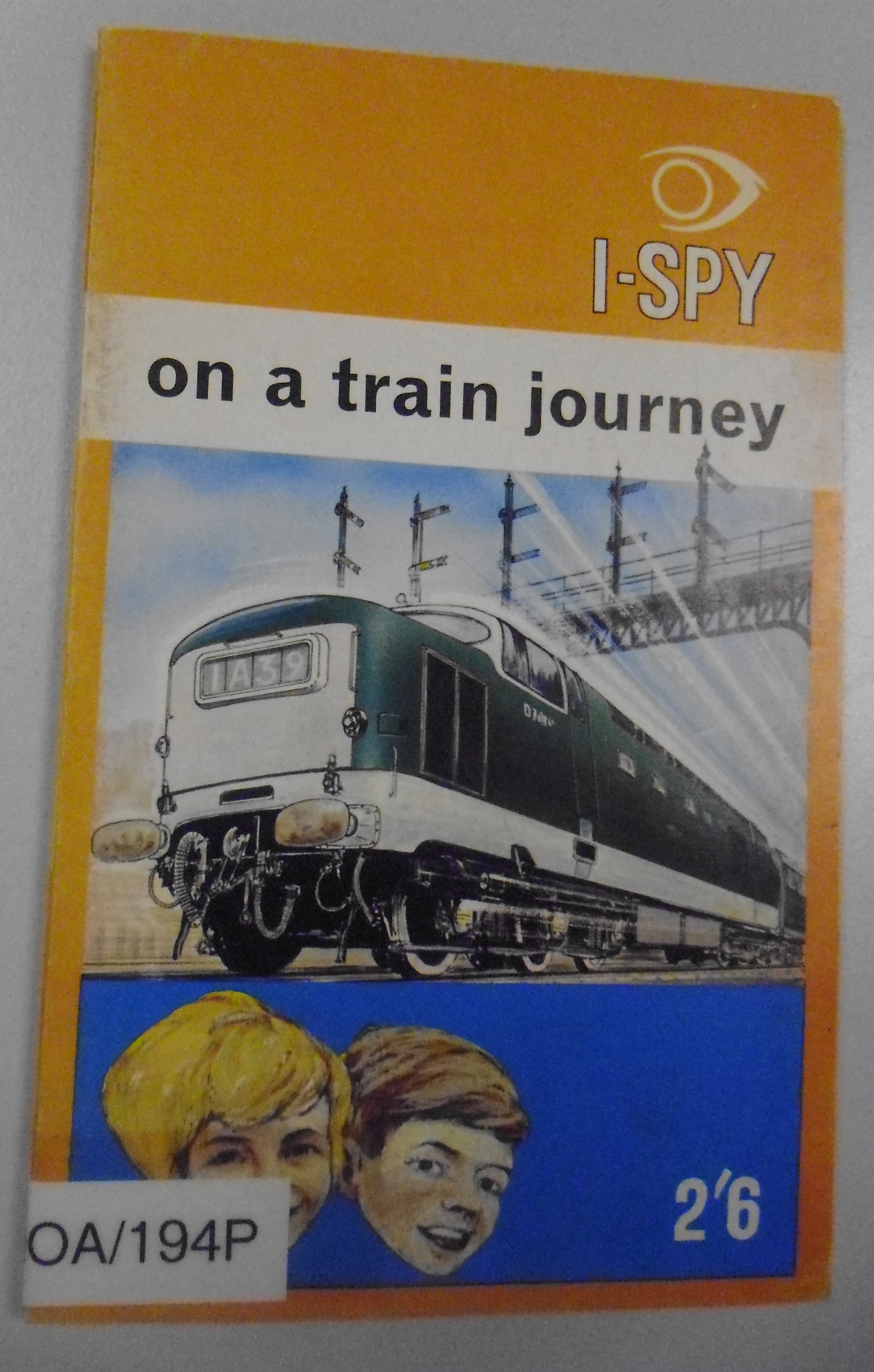
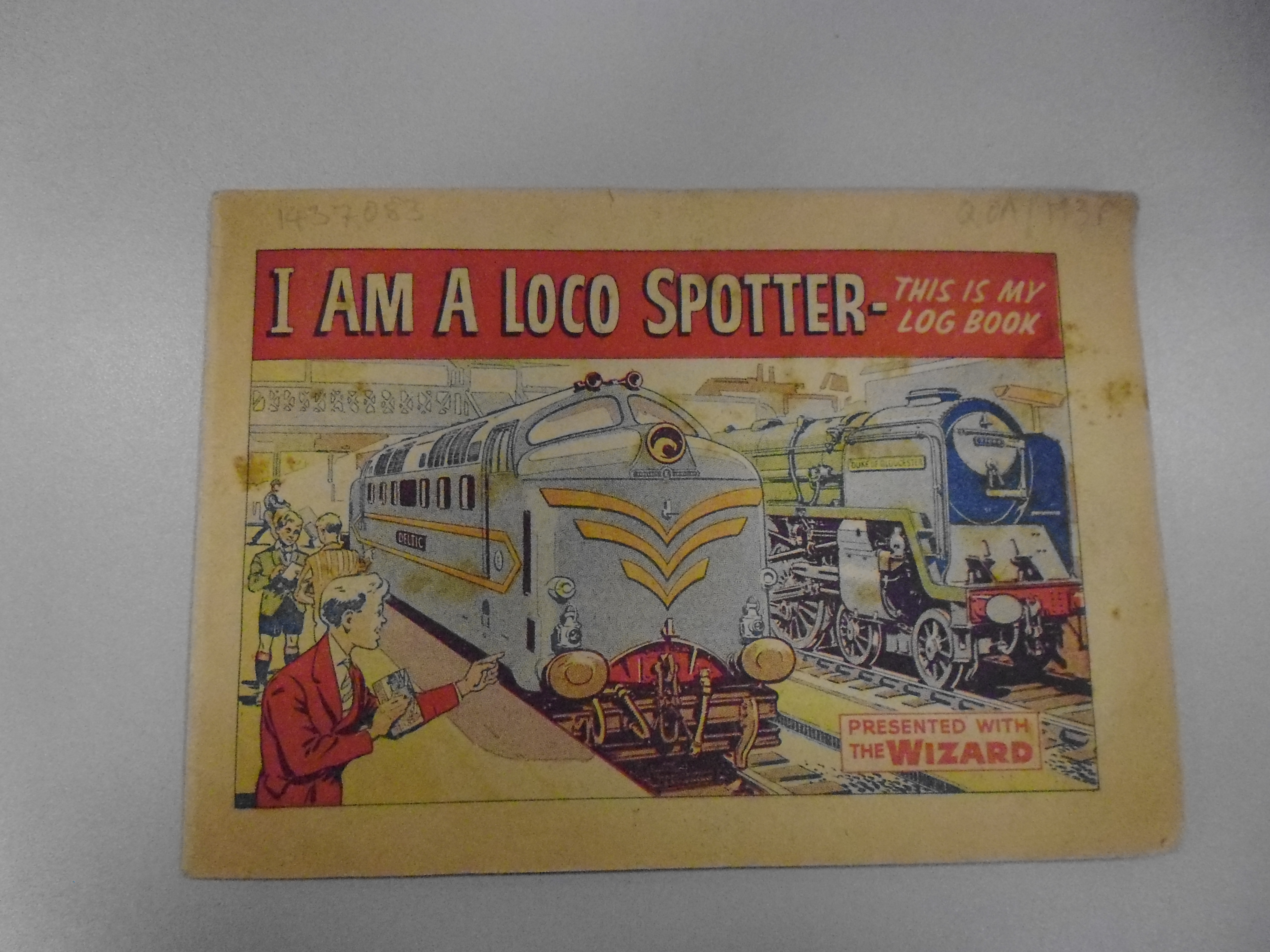
But it is actually the onset of the Second World War which kick-started this hobby in earnest. During the war and the grim austere years of the 1950s, entertainment was in short supply. The excitement felt of watching a steam locomotive roaring past was cheap and easy amusement, which was enhanced further by a knowledge gleaned through reading childhood railway books. Against this backdrop of latent railway interest and dearth of entertainment, was a lowly Southern Railway employee by the name of Ian Allan. Allan worked in the publications department and part of his job was to answer enquiries from the public on various things to do with SR’s locomotives. To help him answer these enquiries he was given a small book compiled by the Shedmaster at Nine Elms of the locomotives of the company. Allan quickly realised how popular this book would be among the enthusiast public and quickly went about approaching senior staff with a view to SR producing it commercially, which they were not interested in doing, but gave him permission to produce it himself, at his own risk. This he did and instantly sold all 2000 copies he made. O.V. Bulleid, SR’s Chief Mechanical Engineer, was not, however, happy. Feeling ownership over these locomotives and, possibly, feeling peeved by the fact that Allan did not ask his permission, Allan had a difficult decision to make: the sack or disappointing his readers. He took a punt, sending a copy to the Chairman, Robert Holland Martin. Martin was impressed by Allan’s industry and gave him permission and cooperation for future editions to be made. Thus Ian Allan’s famous ABC guide was born.
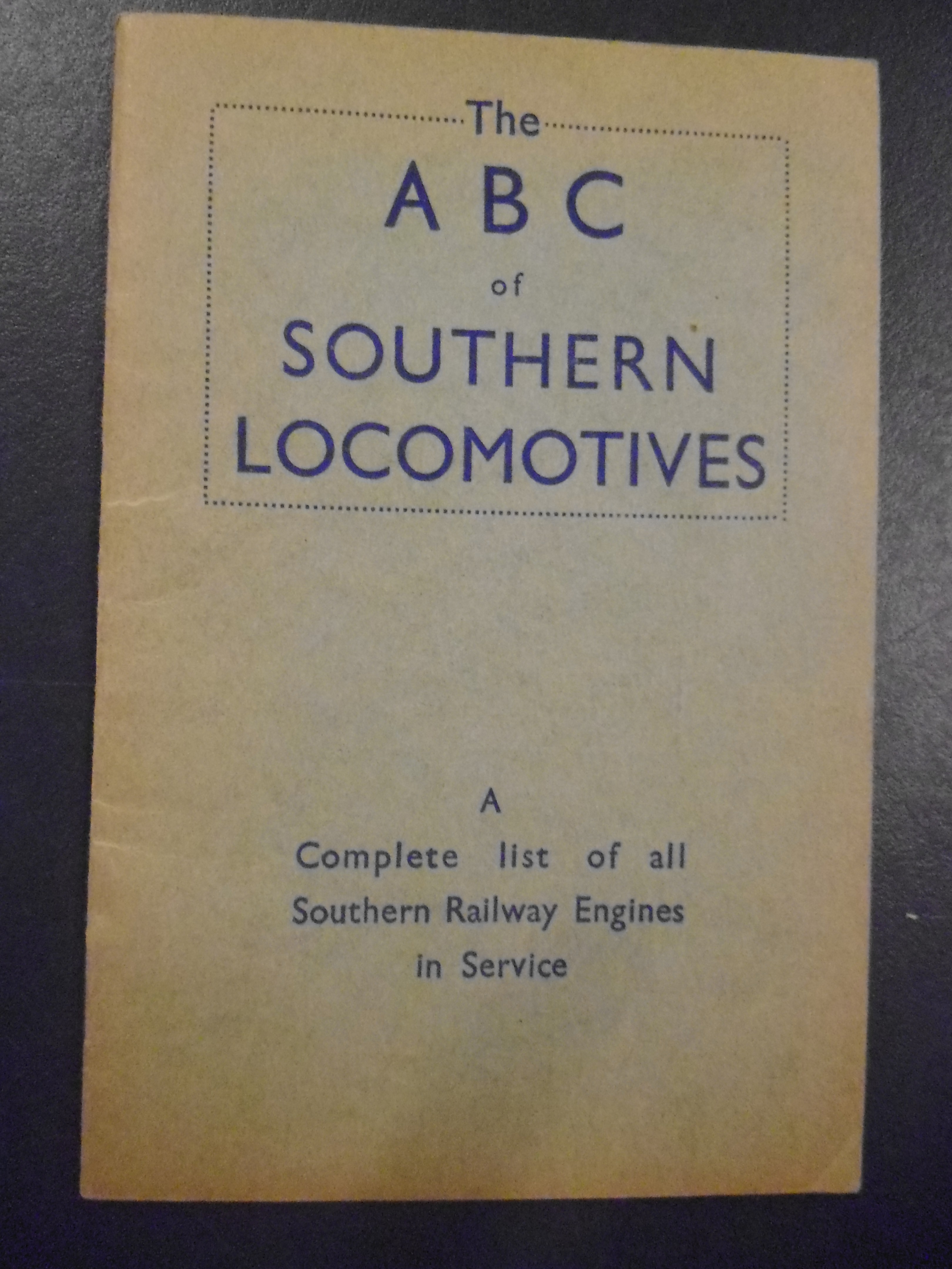
Trainspotters across the country – for Allan very quickly spread his listings to other companies – used these guides, and the partner volume the ABC of Engine Sheds to stake out prime locations with which to spot and record their “cops” or sightings.
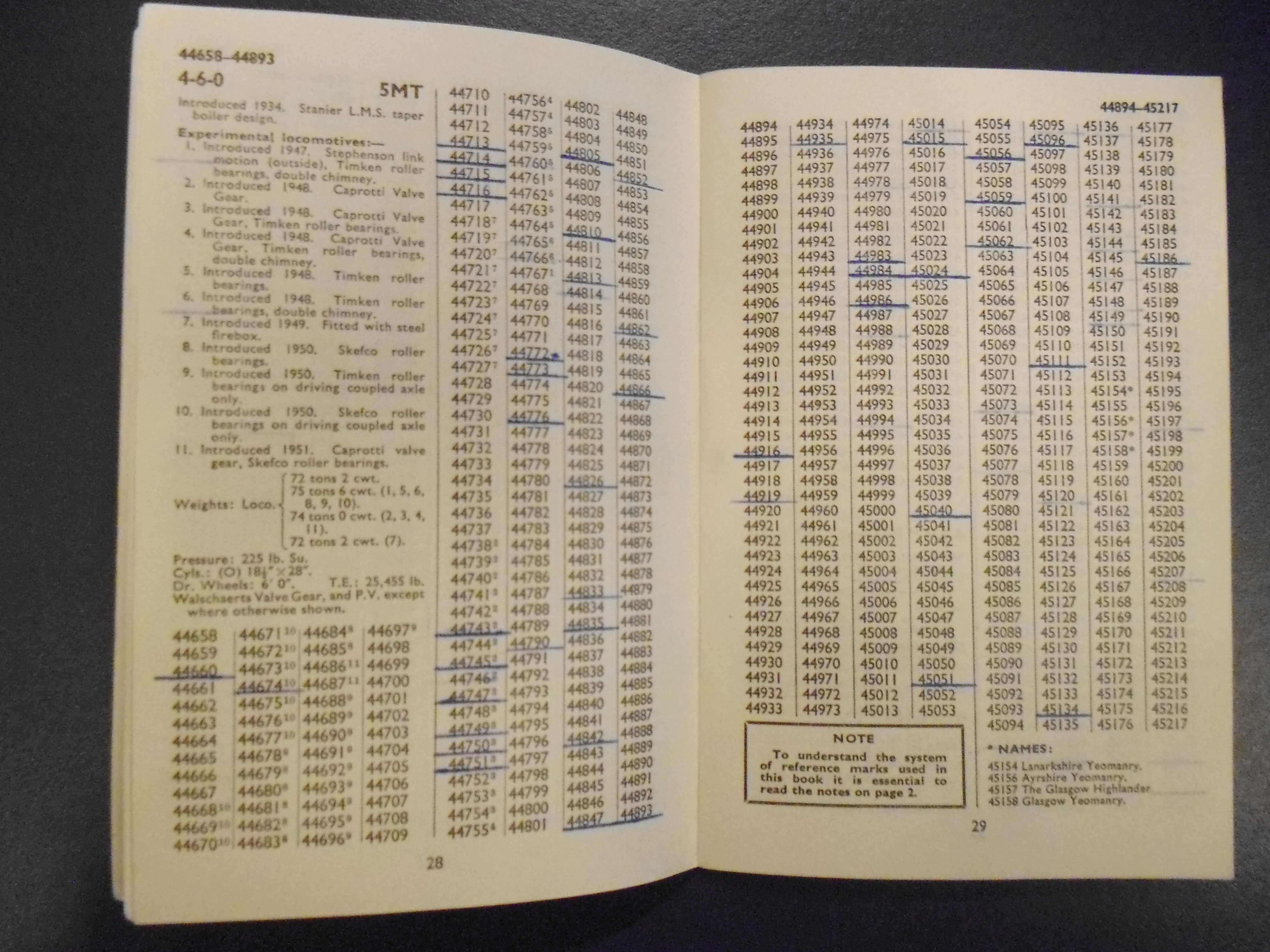
Many trainspotters then used Ian Allan’s Combined volume, which had the entire country’s locos listed, as a Master Record transcribing their working jottings from their regional ABCs. Reading memoirs such as Nicholas Whittaker’s Platform Souls are a wonderful insight into the satisfaction to be gained in undertaking this process: order out of chaos; the satisfaction of achievement – that all important “cop” of a loco outside your home region – and recollection of fun, mischief and anticipation. We have many books on Trainspotters’ memories of this time in the library and, looking back through these underlined lists of numbers, I’m beginning to understand how they’ve managed to capture this period of time in their lives so vividly. These numbers represent more than a loco, they’re a memory. Each number is a conquest, sometimes won at great personal time or expense, often collected with a bunch of like-minded mates, sometimes at great distance from home. This to me sounds more than fun, it sounds like an epic adventure!
Sometimes though this adventurous spirit crossed the line into illegal trespassing. A notorious case made the press in 1944 where a group of lads were caught trespassing on railway land around Tamworth, all allegedly found with copies of Ian Allan’s guide about their person. Fearing a clampdown on the hobby by railway authorities, Allan started a Locospotters Club – a membership club which provided permits for authorised shed access but which also required a solemn swearing of an oath, and rumour has it, a masonic-ritual-like rolling up of a trouser leg during the swearing-in ceremony!
“Members of the Club will not in any way interfere with railway working or material, nor be a nuisance or hindrance to their staff, nor above all, trespass on railway property.” [Taken from British railway enthusiasm by Ian Carter]
The Locospotters Club had a journal and also a membership book. We have a copy of the journal in the collection but not the membership book, so if there are any Club members out there with an old membership book languishing in an attic, do please get in touch. I’m intrigued about this trouser-leg business and the story and insight it could tell about this intriguing hobby.
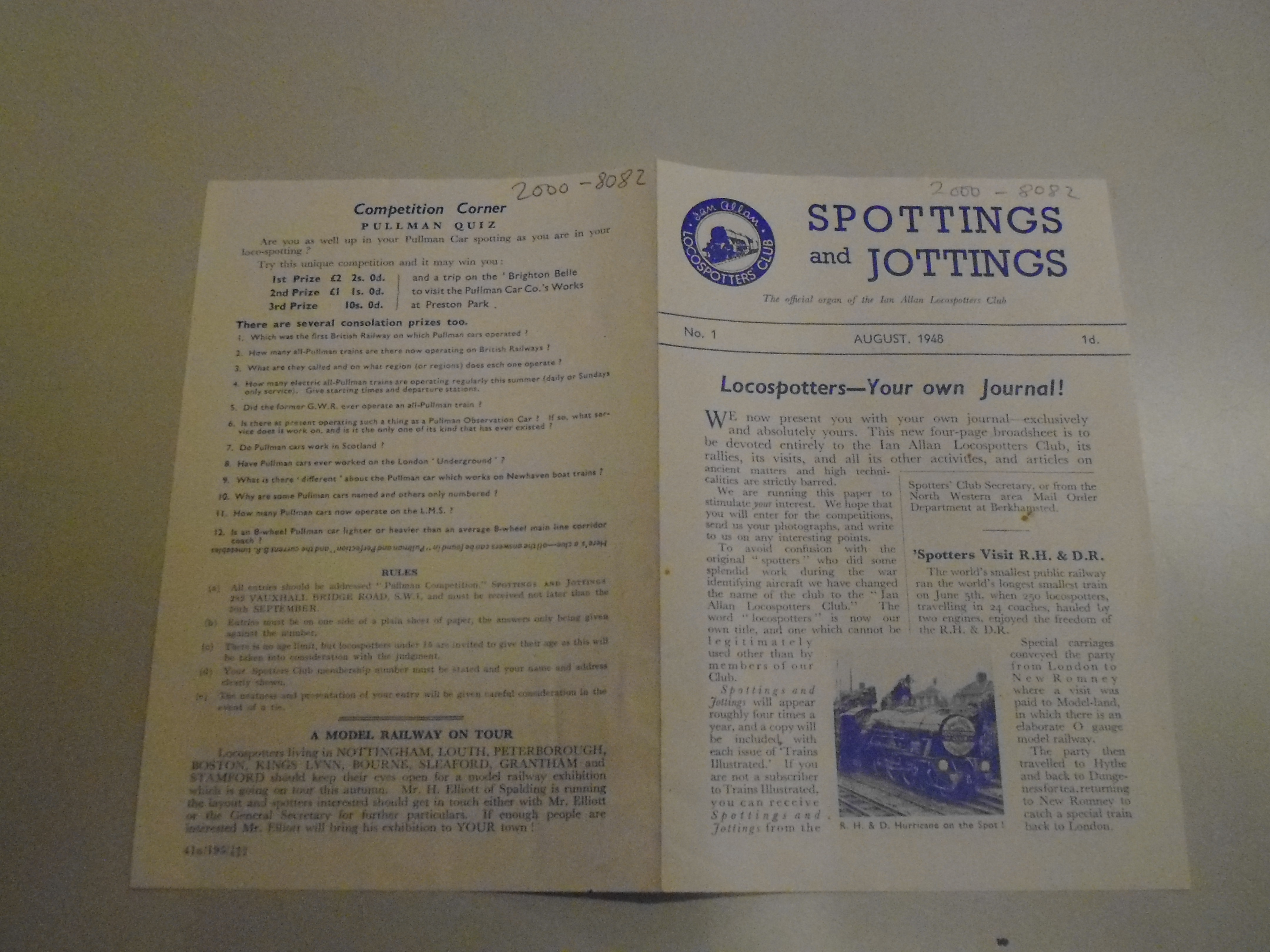
But this story of the ABC does not end with the death of steam. The now successful and well known Ian Allan publishers are still producing an annual guide. They have since been joined by Platform 5 publishers, who focus on motive power and coaching stock as well as overseas traction. The literature of this famous hobby is, it would appear, very much alive and well owing its legacy to the father of trainspotting – Ian Allan and his famous ABC guide.
Bibliography
Allan, Ian “The abc of Southern locomotives” Ian Allan, 1942
Allan, Ian “Driven by steam” Ian Allan, 1992
Carter, Ian “British railway enthusiam” Manchester University Press, 2008
Whittaker, Nicholas “Platform souls : the trainspotter as twentieth-century hero” Gollancz, 1995
Many more guides, memoires and histories available on our library catalogue.
You can find out more about our Trainspotting season on our website.
I was about 12 (1959) when locospotting hooked me, though the only local platform available without travelling far was Ilfracombe. Now 73, I still try to recall which boy’s comic ran, not a comic strip, but a written story at that time, about two kids – one a well off lord I think with a private railway coach, and the other his mate – who journeyed up and down the country train spotting. A lad’s dream I can tell you! I cannot find it now anywhere. Was I in fact dreaming?
You are not dreaming
It was The Wizard comic and the series was “Ginger and the Duke and the wee blue book”!
It ran if I recall correctly around 1959 to 1962.
The Log Book shown at the top of this page was presented free with the comic and a badge was available stating “ I AM A LOCOSPOTTER”
I still have mine and never talk about Trainspotting, to me it was always Locospotting
PETE! I have just acquired a handful of the original Wizard comics with the stories you have mentioned. I’ll do my best to edit a brief resume of the contents of the stories so you and others can see how we spent our 5d each week (2p in new money to you kids!). Eric
Hello Pete,was the posh kid called Lord Snooty?
It’s not surprising the Ian Allan approach had marks of the Masons. Ian Allan himself was a prominent Mason (as his father had been), and his publishing company still, after finally disposing of their railway catalogue, is the principal publisher for Masonic material.
Hi what size format were these books I’m thinking they were A5 size?